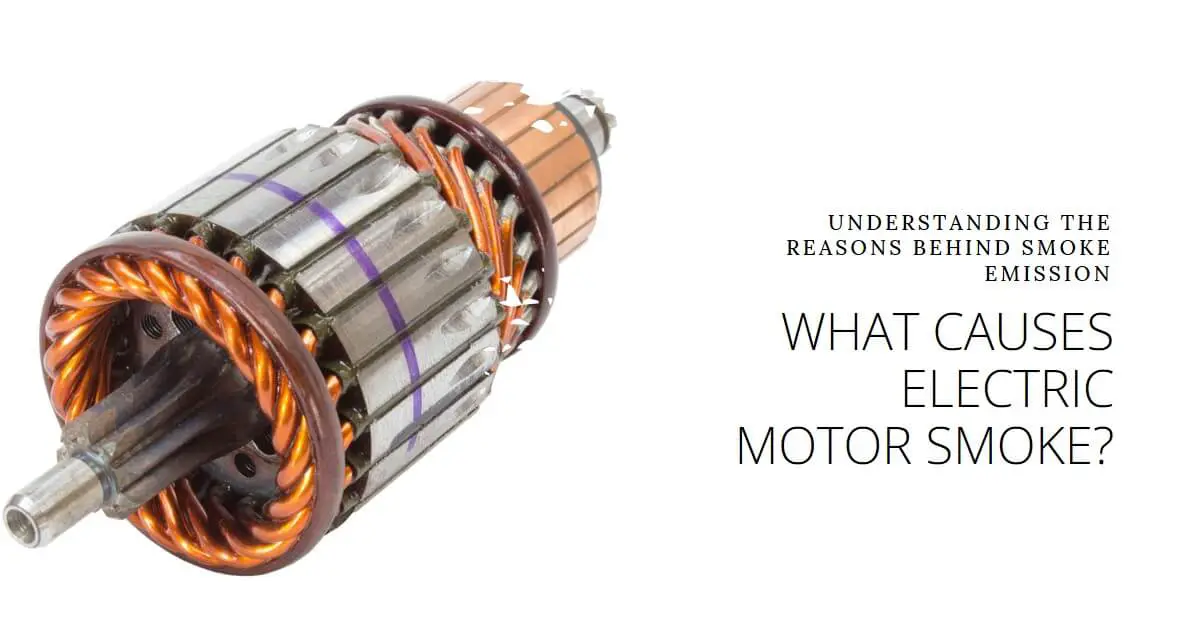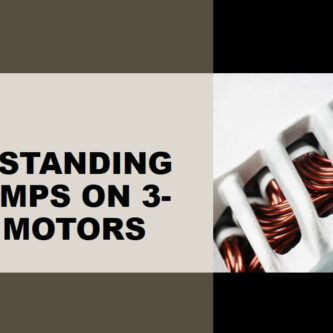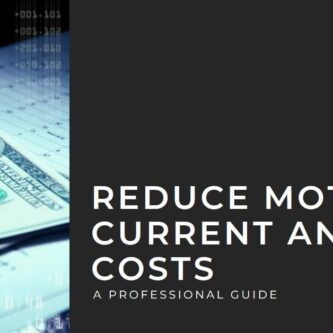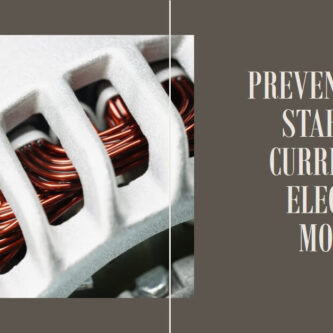Image: “Article Feature Image” by Bing is licensed under CC BY-NC-SA 4.0. Source: Bing Graphic Art. License: CC BY-NC-SA 4.0.
Electric motors play a crucial role in various applications, powering everything from industrial machinery to household appliances.
However, there are instances when an electric motor may start to emit smoke, indicating a potential problem. As a short answer,
Electric motors can smoke due to various reasons, including overheating, electrical problems such as short circuits or insulation failure, and mechanical issues like bearing failure or overloading.
In this article, we will explore the causes of electric motor smoke, the signs to watch out for, and preventive measures to ensure motor safety.
Understanding Electric Motor Smoke
Electric motor smoke refers to the emission of visible smoke or fumes from the motor during operation.
It is an alarming sign that something is amiss and requires immediate attention. Being able to recognize the signs of motor smoke is essential for prompt action and preventing further damage.
Common Causes of Electric Motor Smoke
There are several common causes that can lead to electric motor smoke. These include overheating, electrical problems, and mechanical issues.
Understanding these causes in detail can help in troubleshooting and resolving the problem effectively.
Overheating
One of the primary causes of electric motor smoke is overheating. This can occur due to various factors, such as insufficient cooling or blocked ventilation.
Insufficient cooling can result from factors like lack of lubrication, inadequate airflow, or a malfunctioning cooling fan.
On the other hand, blocked ventilation can be caused by dust and debris accumulation or improper installation, hindering the motor’s ability to dissipate heat effectively.
Electrical Problems
Electrical issues can also lead to motor smoke.
- Short circuits, caused by faulty wiring or damaged insulation, can result in excessive current flow and heat generation.
- Overvoltage, which occurs due to power surges or faulty voltage regulators, can also stress the motor and cause smoke.
- Additionally, voltage drop, where the motor draws more current due to low supply voltage or voltage fluctuations, can lead to overheating and smoke emission.
- Insulation failure, typically caused by aging insulation or exposure to moisture, can further exacerbate electrical problems.
Mechanical Issues
Mechanical issues can contribute to electric motor smoke as well.
- Bearing failure, caused by factors like lack of lubrication or excessive load, can generate heat and smoke.
- Misalignment, arising from improper installation or wear and tear, can strain the motor and lead to smoke emission.
- Overloading, which happens when the motor is subjected to excessive power demand or unbalanced loads, can also cause the motor to overheat and emit smoke.
Effects of Electric Motor Smoke
The presence of smoke in an electric motor indicates potential hazards and risks. Firstly, it poses a fire hazard, as the smoke may contain combustible particles.
Additionally, motor damage can occur, leading to costly repairs or even motor failure. Moreover, there are safety risks associated with smoke emission, including the inhalation of toxic fumes. It is crucial to address motor smoke promptly to mitigate these effects.
Read also my other article: Burnout Danger: The Hidden Risks Of Motor Overheating
Preventive Measures
To prevent electric motor smoke, regular maintenance is essential. This includes proper lubrication of bearings and other moving parts, as well as monitoring and inspection to identify and address potential issues in a timely manner.
Temperature control measures, such as ensuring adequate cooling and avoiding overloading, can also help prevent smoke emission.
Furthermore, voltage regulation, through the use of surge protectors or voltage stabilizers, can safeguard the motor from electrical fluctuations.
Troubleshooting Electric Motor Smoke
When encountering electric motor smoke, it is important to identify the source of the problem.
This may involve checking for visible signs of damage, inspecting electrical connections, or assessing mechanical components.
Once the source is determined, appropriate action can be taken, whether it involves replacing faulty parts, cleaning ventilation pathways, or seeking professional assistance for complex repairs.
Rea my comprehensive article: Unveiling The Mystery: What Causes High Current Draw In Electric Motors?
Conclusion
Electric motor smoke is a warning sign that should never be ignored. It indicates underlying issues within the motor and can lead to more severe consequences if left unaddressed.
Overheating, electrical problems, and mechanical issues are the primary culprits behind motor smoke.
By understanding the common causes and taking preventive measures, such as regular maintenance, proper lubrication, and monitoring, motor owners can ensure the longevity and safe operation of their equipment.
Promptly addressing motor smoke through troubleshooting and seeking professional assistance when necessary is vital to prevent further damage and potential safety risks.
Motor safety is of paramount importance in various industries and applications. The failure of a critical motor due to smoke emission can lead to production downtime and significant financial losses.
Additionally, faulty motors can pose risks to personal safety and property. Therefore, proactive measures, regular inspections, and adherence to recommended maintenance practices are crucial to avoid motor smoke and ensure the smooth operation of electrical systems.
In conclusion, electric motor smoke is a warning sign that indicates underlying issues within the motor.
By understanding the causes and implementing preventive measures, motor owners can protect their investments, reduce downtime, and promote the longevity of their electrical systems.
It is essential to prioritize motor safety, promptly address smoke issues, and seek professional assistance for complex repairs or troubleshooting when needed.
you work With Electricity! Don’t leave empty-handed!
Looking to stay ahead of the game in the world of electrical engineering? Subscribe to my YouTube channel and gain access to exclusive content you won’t find anywhere else!
The staff I recommend (Amazon Affiliate Links to products I believe are high quality):
- Economy 120 Volt/60Hz AC Power Source – Step-Down Voltage & Frequency Converters 1800W
- UNI-T Digital Multimeter Tester UT139C
- 50-Amp Extension Cord for RV “100ft”
- Voltage Stabilizer 110/220v
- Hair Dryer “best selling“
- TOSHIBA EM131A5C-BS Countertop Microwave Ovens
Disclaimer: This contains affiliate links to Amazon products. I may earn a commission for purchases made through these links.





